Black Sea armadillos: from "Popovok" to "Potemkin"
“POPOVKI” - FIRST BLACK SEA BATTLESHIP VEHICLES
Crimean War 1853-1856 ended in defeat of the Russian Empire. Under the Paris Peace Treaty, our country lost the Black Sea Fleet, naval bases and fortresses on the Black Sea. It was only allowed to have a flotilla of small ships from 10. Emperor Alexander II began to carry out liberal reforms in the country, they also affected the Russian Imperial fleet. The construction of steam armored coastal defense ships began in the Baltic. And in 1876, the first sea-going battleship Peter the Great entered the fleet - the strongest warship in the world. The construction of battleships begins. On the Black Sea, everything was different.
The leadership of the Marine Ministry has repeatedly planned to begin the construction of warships in the south. But every time the solution of the issue was postponed due to various reasons: our country was forced to abide by international treaties, the treasury chronically lacked funds, there was not a single shipyard on the Black Sea that was ready to build a relatively large ship, and could finally choose a draft armored ship. Meanwhile, the Ottoman Empire rapidly increased its fleet.
At the end of 1870, when France was defeated by Prussia, the situation changed. Russia, taking advantage of a favorable moment, in January 1871 announced the cancellation of the terms of the Paris Treaty. Now nothing restrained the shipbuilding and the restoration of the combat capability of the Black Sea Fleet began. The first thing decided to build four ships of coastal defense. At first they thought about building a Uragan-type monitor, then they wanted to build armored boats similar to the Baltic Smerchu or Mermaid. But in the south, Russia still did not have a single shipyard. Therefore, it was decided to build the first Black Sea armored ship in St. Petersburg. Instead of monitors or tower frigates "under the spire" decided to build four ships of circular shape. The author of Peter the Great, Rear Admiral A.A., promoted this project. Popov, who had unquestioned authority. He managed to persuade the military leadership to build round ships for the Black Sea in order to save state funds and even to “Highest approve” his project. The emperor called such ships "popovka". So they went into history the fleet, becoming the most unusual Russian ships.
Soon, preparations for the construction of the first “popovka” began in the New Admiralty. The work began in February 1871. From April, the hull was assembled with bolts, and it went day and night. December 17 held an official bookmark in the presence of the emperor. The first ship was called the Novgorod. By this time the hull was almost ready. By January, 1872 was dismantled and began to be shipped to the Black Sea for final assembly. In March, the first batch of parts was delivered to the bank of the Ingul River in the Nikolaev Admiralty. The assembly began immediately, but it lasted more than a year. Few workers worked on the stocks, there were not enough machines, there were not enough tools and equipment, i.e. the admiralty was not even prepared for such works. Only 21 May 1873 "Novgorod", with all the mechanisms and armor, was launched. Began to test the unusual ship, which stretched for another year. During testing, the design of the “popovka” continuously made numerous changes and improvements. Simultaneously, shooting and test voyages on the Black and Azov seas were carried out. In them, she was necessarily accompanied by a schooner-escort "just in case." In 1874, Novgorod was accepted into the Black Sea Fleet.
The construction of the second “popovka”, which was called “Kiev”, began on the bank of the Ingul River in January, 1872. It was planned to be built according to the original project, but in March A.A. Popov convinced the military leadership to make changes to it and the work on the stocks was suspended. According to the new project, the size of the ship has increased, thanks to this they have placed a more powerful and sophisticated steam engine, increased their armament and booking. It was only in the autumn of 1873 that work began on lengthening the old slipway, since The body of the second “popovka” on the new project was more on 6 meters than on the head one. Old case dismantled. New ship began to build and called "Vice-Admiral Popov." The works were resumed only in the spring of 1874. 27 in August. 1874 was officially bookmarked in the presence of the emperor. Construction caused a lot of difficulties, supplies of armor and mechanisms were delayed, there were not enough workers and equipment. 25 August 1875 g. Housing launched. Almost a year went to the completion, as Mechanisms and part of the armor builders had to wait from suppliers. In June 1876, the tests of Vice Admiral Popov began, in August he was hastily accepted into the fleet, since the situation in the Balkans has escalated and the country was preparing for war. During service in the design of "popovok" made numerous changes. The construction of two more “floating saucers” was abandoned due to the lack of budget funds and the design flaws of the ships that emerged during the voyages and shooting. There is a famous legend that after each shot, the main caliber began to rotate the “pop” around its axis. She was refuted, but the "sediment remained." The proposal to build other armored ships for the Black Sea, unfortunately, did not meet with the understanding of the military leadership - the budget did not have enough funds and their construction was postponed indefinitely.
12 April 1877, the next Russian-Turkish war began. Armament "popovok" as much as possible ("Novgorod" received 2 x87-mm guns, 2 rapid-fire guns Enstrem, 2 Gatling grabber and 6 pole mines, I used X-NUMX-XXNX-mm guns, and I used the same buttons, and I used the same suits, and I used the same suits, and I used the same suits, and I used the outfits for the Vice Admiral Popov. ), but their combat value remained extremely doubtful. In June, Novgorod and the Vice-Admiral Popov made a trip to Ochakov, in July to the Cilicia dune of the Danube, but the enemy was not found. The rest of the time they were part of the “active defense of Odessa,” but they did not meet the enemy ships. The “hot heads” in the military leadership suggested sending “popovki” to cruise, but they were dissuaded. But there were no other warships in the Russian Empire on the Black Sea, and the Turkish fleet had to fight with the ROPiT armed steamers and mine boats. The Russian army acted successfully, our troops reached the suburbs of Istanbul. In February, 8, the war ended with the defeat of the Ottoman Empire, but our country could not take advantage of this victory - because of the "help" of the European powers. The Black Sea straits remained Turkish. "Popovki" continued service on the Black Sea. In 87, according to the new classification, they became battleships of coastal defense. For two decades, their services were repeatedly upgraded, ships occasionally made trips along the coast, but the sailors still looked at them with a grin.
FOUR FIRST CLASS BLACK SEA BONNOANTSA
In 1882, Admiral I.A. became the new head of the Marine Ministry. Shestakov. He personally developed projects of armored ships, controlled their design and construction, constantly intervened in the creation process and repeatedly made an "edit". Under him, a twenty-year fleet development program was developed. According to it, the Black Sea Fleet was to receive 8 squadron battleships, 2 cruisers and 19 destroyers. This allocated a significant amount in 67 238160 rubles. Later, 6 destroyers and 6 canlods were added to the plans. The development of the project of the Black Sea battleship began in August 1882. Instead of Peter the Great, it was decided to develop a new project of the battleship. Instead of the towers, which were recognized as an expensive “luxury”, the new ships received three two-barbet installations each, in which they placed 305-mm guns of the 1877 model (weighing 43 tons each). To save displacement, the designers created a shortened armor belt at the waterline, abandoned the fourth pair of 305-mm guns and armor protection of 152-mm guns. Changes were made to the ship reservation system - the armor belt was significantly extended and expanded, the iron plates were replaced with iron iron. It was not the last changes that were made to the design of the ships, the "improvements" continued in the process of construction.
The construction of three armored ships of the same type began in July at 1883 at the shipyard of the Nikolaev Admiralty ("Catherine II") and at the shipyard ROPiT in Sevastopol ("Chesma" and "Sinop"). The official bookmark took place in September 1884. The experience of building “popovok” went to no-kolaevtsy for the benefit, but not all the mechanisms of the new ships were domestic. Russian factories were not able to supply armor for three battleships at once, and the contract was concluded with the British, who at one time successfully supplied the plates for Peter the Great. For two years, Kamel and K0 had to supply 412 plates for three ships (137 to ship + 1 for experienced firing). In England, they also ordered cars for the Sevastopol ships, for the “Catherine II” they were made by the Baltic Shipyard. 6 May 1886 in Sevastopol in the presence of Emperor Alexander III launched the Chesma, on May 11 in Nikolaev the descent of Catherine II took place. 20 May 1887. Sinop got off the ground. Continued work on the construction began, and at the end of 1887 the ships were concentrated in Sevastopol for decoration and armament. The battleships had already installed weapons and reservations, and the management still made changes to the project. At Chesme, for example, I had to cut an already installed casemate along the deck. But, due to delays in construction, the newest 35-caliber 305-mm guns were placed on it. "Sinop" and "Catherine II" received the old 30-caliber guns of the 1877 model. They were supplemented with 7 XX152-mm, 8 XX47-mm, 4 XX5-X37-mm and two landing guns. The period of completion and mooring tests of "Catherine II" lasted for 18 months, she entered sea trials only in May 1889. "Chesma" had already been "accepted into the treasury" by that time. "Sinop" was released on sea trials in the spring of 1890, because readiness delayed the delivery deadlines of the main machines of the English company "Nepir and Sons". The three newest armored ships with eighteen 305-mm guns after the entry into service became the basis of the Black Sea Fleet.
In 1888, the leadership decided to build the fifth Black Sea battleship also in the “Catherine II” type, since there was simply no other project. They wanted to make a lot of changes in it, but as a result of the construction a slightly improved Chesma was obtained. He also received the latest 35-caliber 305-mm guns. The new ship, which was named “George the Victorious”, began to be built at the ROPiT shipyard in Sevastopol in March 1889. 26 in February. 1892 was launched into the water. In 1893, he made his first voyage with a squadron. At the same time, various tests continued on the ship and numerous deficiencies were eliminated. As a result of the implementation of the shipbuilding program, the Black Sea Fleet received a full-fledged squadron of four ships of the same type. But they were built with a mass of flaws: with a significant overload (around 650 t), when firing from the guns of the main caliber, the deck and hull were damaged, i.e. free to shoot guns could only traverse. And when you hover four 305-mm guns on one side, the battleships received a significant roll. In 1892, they became known as squadron battleships for a new classification. Their main task was to destroy fortifications in the Bosphorus - powerful main-caliber guns could crush Turkish batteries and ensure the landing of troops. At the end of 80 - the beginning of 90's. XIX century. Our military strategists have developed several plans to seize the Black Sea straits. Troops and artillery were prepared for the landing force and transport for their transportation. All the necessary ammunition, equipment and supplies lay in warehouses in Odessa and Sevastopol. It remained only to give the order to start the operation, but Emperor Alexander III was not in vain called Peacemaker, and his son Nicholas II did not dare to conflict with the European powers. The Russian expedition to seize the Bosphorus did not take place. Nevertheless, the battleships of the "Catherine II" type were for a long time the strongest armadillos on the Black Sea. For two decades they took an active part in the exercises and maneuvers of the fleet, conducted numerous artillery and torpedo firing, carried out mine-laying (with rafts), landed assault forces, made long hikes on the Black Sea, visited ports, conducted experiments with communications, with battleships fired balloons and snakes. They were the “face” of the Black Sea Fleet, a symbol of its rebirth after the Crimean War.
TWO BATTLESHIPS INSTEAD OF FIFTEEN
In the 90-s of the XIX century in the mess of the Black Sea ships such anecdote was popular: “Request in the English parliament:“ And it is known to respected lords that Russia has started building 15 armadillos on the Black Sea? They will be named after the twelve apostles and the three holy hierarchs. Answer: "No, it is not known." Following this logic, at the turn of the XIX-XX centuries, the Black Sea fleet had to be replenished with fifteen battleships, and in fact only two ships replenished it; "The Twelve Apostles", "Three Saints".
In 1886, the design of the fourth Black Sea battleship, which was called the Twelve Apostles, began. He became the “swan song” of Admiral I.A. Shestakova. The “Emperor Alexander II” was used as a prototype for the design, but the management wanted to install 4х305-mm, 2х229-mm and 2X152-mm guns for the new “low-cost” ship (by analogy with the Baltic ships). And in one of the projects it was planned to place as many as eight 229-mm guns. The construction work began in Nikolaev on February 1888. But soon they stopped because the project was changed — now it was decided to arm the ship with 4x305-mm and 8X152-mm guns. It was decided to place the main caliber in barbet installations. The official bookmark took place on 9 August 1889, the Twelve Apostles launched 1 on September 1890. The construction began, which lasted for three years - the project was still being edited, and the contractors had traditionally disrupted the delivery dates. The reservation was received by Kamel and K0, but it did not deliver the plates in 1890 (as in the contract), but delayed the execution of the works right up to 1892 due to the urgent orders of the British Admiralty. In April, the ship 1892 was transferred for completion in Sevastopol. In the fall, battleship trials began, and in the spring of 1893, the Twelve Apostles began sailing with a squadron. Soon he was taken "to the treasury", but he was never able to reach the contract speed due to the low power of steam engines. The new "malostoyuschy" battleship was more seaworthy and had a better road performance than ships such as "Catherine II of", but was weaker armed (4h305 mm, 4x152-mm 12h47 mm, 4h5h37-mm and two assault guns) and much worse armored.
The George the Victorious (the Catherine II type) became the fifth battleship, and the Three Saints were added to the Black Sea Fleet as the sixth. This ship can be called the first Black Sea armadillo of the classic type. Its design began in September 1890, but the initial design was rejected by the naval leadership. The “Navarin” was taken as the basis for the new version, and the authorities focused on the English “Trafalgar” as a foreign equivalent. As a result, during the development of the project, the displacement and the size of the armored ship increased significantly, its armament was strengthened and the reservation was improved. The latter has changed several times during construction due to continuous technical progress. As a result, as many as three foreign firms received the final order for armor plates for the battleship. A number of mechanisms and devices for the battleship were also ordered abroad - part of the armor, cars and boilers in England, tiller and rudder stock in Germany, armor plates in France. The main caliber was supplemented with 8x152-mm, 4x120-mm, 10x47-mm, 8x5x37-mm, 4 machine guns and two landing guns. Construction began in Nikolaev at the beginning of 1891, but first it was necessary to reconstruct the slipway No. XXUMX, since new battleship did not fit into it. The official bookmark took place only 7 September 4 g. In the process of construction, the "editing" of the project continued. The hull was launched on 1892 in October of 31. Completion began, but during this work the project continued to be modified. As a result, only in 1893, the tests of the battleship began, at the beginning of 1896, it was "taken to the treasury." He became the largest and most powerful battleship on the Black Sea and remained so until 1897.
SEARCHING FOR IDEAL
The Rostislav became the seventh Black Sea battleship. This time, the management decided to build a small ship with powerful armament, good seaworthiness and low draft, which could operate off the coast of the enemy - destroy batteries, support troops and troops. Work on the project began in 1892. It lasted more than a year, each option caused fierce controversy, because in 6000 t displacement could not accommodate weapons, reservations, vehicles and mechanisms. As a result, it was decided to sacrifice artillery: instead of 305-mm, 254-mm guns were placed on it. The drives of the towers of the GK were made electric instead of hydraulic, the average caliber (8x152-mm) was also placed in the two-gun towers. They were supplemented with 12X47-mm and 16x37-mm guns. In January, 1894 in Nikolaev began construction work. The official bookmark took place on 6 in May of 1895. The hull launched the 20 in August of 1895. Completion began, but a number of suppliers traditionally disrupted the deadlines. Especially long waited for the delivery of 254-mm guns from the Obukhov plant. Tests of the battleship began in October 1898 g. They were accompanied by the elimination of numerous defects and stretched over two years. In 1900, he was "taken to the treasury", he began to go to the voyage, but after that the finishing touch continued. An elegant battleship became the flagship of the Black Sea Fleet, its spacious admiral's cabin, a comfortable bridge and cozy cabins were loved by flagships of all ranks. Unfortunately, over the years of impeccable service, “Rostislav” didn’t do without state of emergency - on the night from 29 to 30 in May 1909, at the entrance to Sevastopol, he rammed the submarine Kambala. It broke into two parts and sank instantly, 20 submariners died.
The world-famous Potemkin became the eighth Black Sea battleship. More precisely, "Prince Potemkin-Tavrichesky." The development of the project began in 1895. Three Saints and Peresvet acted as a prototype, and Majestic served as a foreign analog. The new ship was supposed to be the most powerful on the Black Sea. The military leadership returned to the 305-mm guns. It was planned to improve seaworthiness (at the expense of the forecastle) and strengthen the booking. The design continued until May 1897. Its construction began in Nikolaev in December 1897, the official bookmark took place on September 28, 1898, the hull was launched on September 26. 1900, completed traditionally for domestic shipyards, was delayed for several years. Especially tightened with the supply of guns and turrets GK. Only in the fall of 1903, the Potemkin was put to the test. By the summer of 1905, they were completed, but a "famous uprising" prevented the "acceptance into the treasury".
14 June 1905 on Tendre, where artillery fires are to take place, the Potemkin sailors began an uprising due to poor nutrition. They captured weapon, and the skirmish began on the ship. As a result, 6 officers and a 1 sailor were killed. Battleship was in the hands of the rebels. A squadron was sent to search for him, on June 17 they overtook the ship and the famous “silent fight” took place. The rebellious ship continued its wanderings through the Black Sea (he went to Odessa and Theodosius), and they ended in the Romanian port of Constanta. Sailors went ashore and became immigrants. On June 26, the battleships Chesma, Sinop and 4 of the destroyer arrived behind the ship. 1 July he was "under escort" brought to Sevastopol. October 6 battleship renamed the "Panteleimon."
He took part in the November events in Sevastopol. A part of the fleet ships raised red flags, commanded by retired lieutenant PP. Schmidt The battleship was captured by rebel sailors, but did not take an active part in the uprising. The main role in those events was played by the cruiser Ochakov. The uprising was brutally suppressed. Loyal to the government ships, serfs and field artillery shot the ships of the rebels. The battleship Rostislav took part in this, and fired 2х254хmm and 16x152-mm projectiles according to Ochakov.
BEFORE THE WAR
Introduction to the new battleships allowed the naval leadership to begin to get rid of the old ships. The first "under the knife" were sent "popovki." They were part of the Black Sea Fleet until 1903, but mostly the ships were in the South Bay of Sevastopol. They were deposited at the port and excluded from the fleet lists. "On the needles" of their corps was allowed only in 1912. The next of the fleet combat personnel in 1911 was the "Twelve Apostles", which for several years stood in sediment in South Bay. It was used for training purposes, as a warehouse and floating base of submarines. It was converted into a mine storehouse and set up in Sukharnaya gully of Sevastopol, and its naval mine arsenal was stored in its holds.
At the end of the first decade of the 20th century, the question arose of the future fate of battleships of the Catherine II type - ships morally and physically outdated and did not meet the new standards. For their maintenance considerable funds were spent. Due to the budget deficit, the question of modernizing these battleships was not positively resolved. The first such project was developed at the end of the 19th century, but it didn’t get any further. Now several projects have been developed to modernize them to the level of the most modern battleships, as well as several conversion options. They were discussed for a long time, high military officials argued and “broke feathers”, designers developed new versions, correspondence on these issues occupied entire cabinets, tons of paper were spent on it, but no funds were allocated for the work. Ships brought into reserve. Instead of a reserve squadron, the fleet received two auxiliary ships. The Sinop became an artillery training ship and was re-equipped. They installed 4X203-mm, 12x152mm, 2x47-mm and 4 machine guns on it. The St. George the Victorious was re-armed with eight new 152-mm guns and used as a military command in Sevastopol. He stood on barrels near the Grafskaya Wharf.
The rest of the battleships of the type "Catherine II", it was decided to write off. Unfortunately, there was not a single visionary “state man” in the military leadership who suggested another option of using them. The fact is that the Black Sea ports were virtually defenseless from attacks from the sea. And for their protection it would be possible to install these ships as a fireworks and a floating battery. From the former battleships could remove the car, replace the reservation and completely rearm. With reduced crews, they could protect the tranquility of Odessa, Novorossiysk and other Black Sea ports. This project did not require such significant funds and would significantly strengthen the country's defense in the south. But it was decided differently and in 1907 the “Catherine II” and “Chesma” were withdrawn from the fleet. Now they were called "Expelled ships No. 3 and No. 4", their corps still served the Russian Imperial Navy.
The rather modest military budget of the country did not allow conducting full-fledged combat training by all the ships of the fleet, and a significant part was forced to stay in the so-called for a long time. "Armed reserve." Black Sea students engaged in combat training in the spring, summer and autumn, and in the winter they carried out repairs, ships docked, etc. Every year the situation in the Balkans worsened and, accordingly, every year the tension of the combat training of the Black Sea people increased.
- Alexey Tsarkov, magazine "Weapon"
- The beginning of the era of steam and armor
"Peter the Great" and others
From "Navarin" to "Borodino"
Black Sea armadillos: from "Popovok" to "Potemkin"
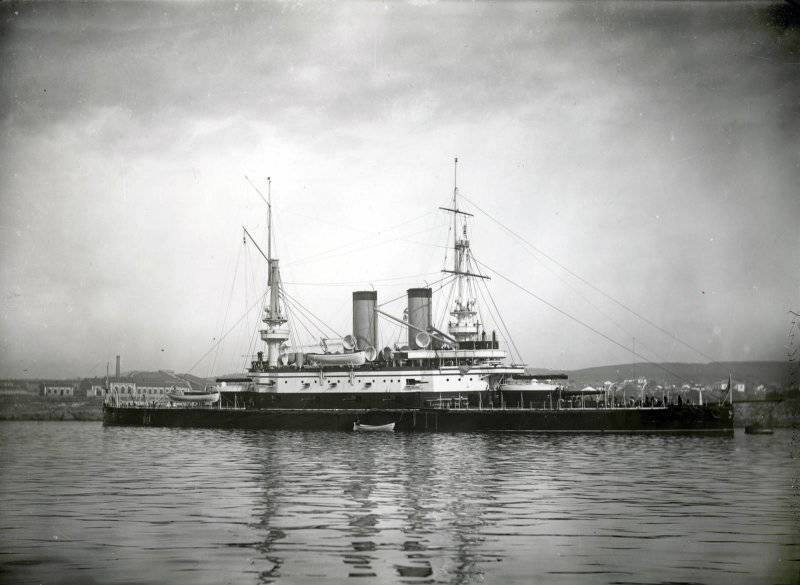
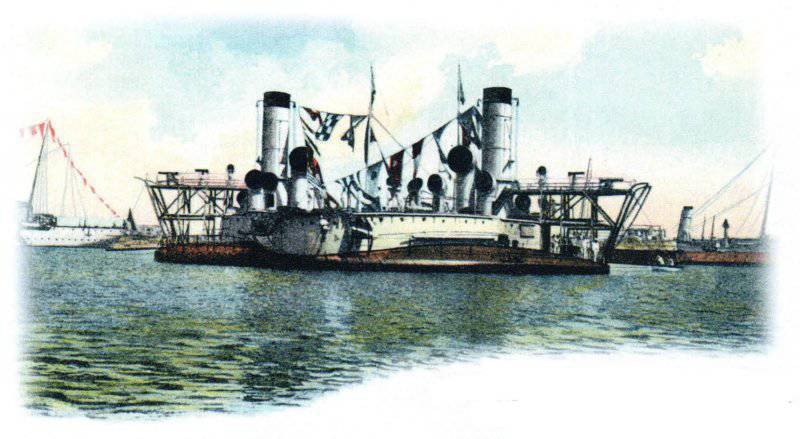
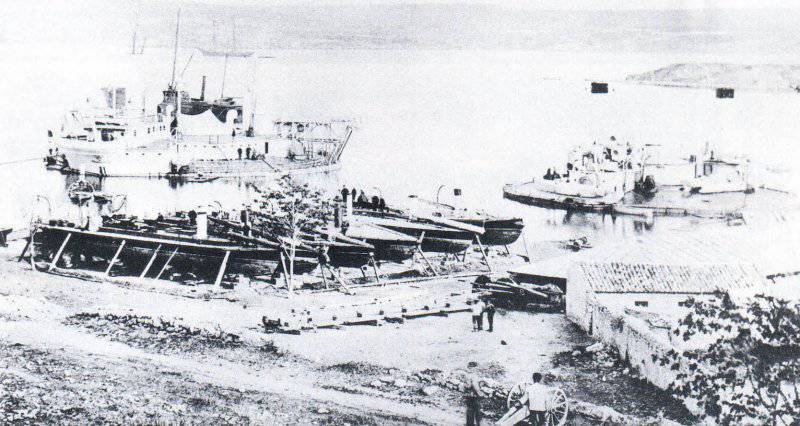
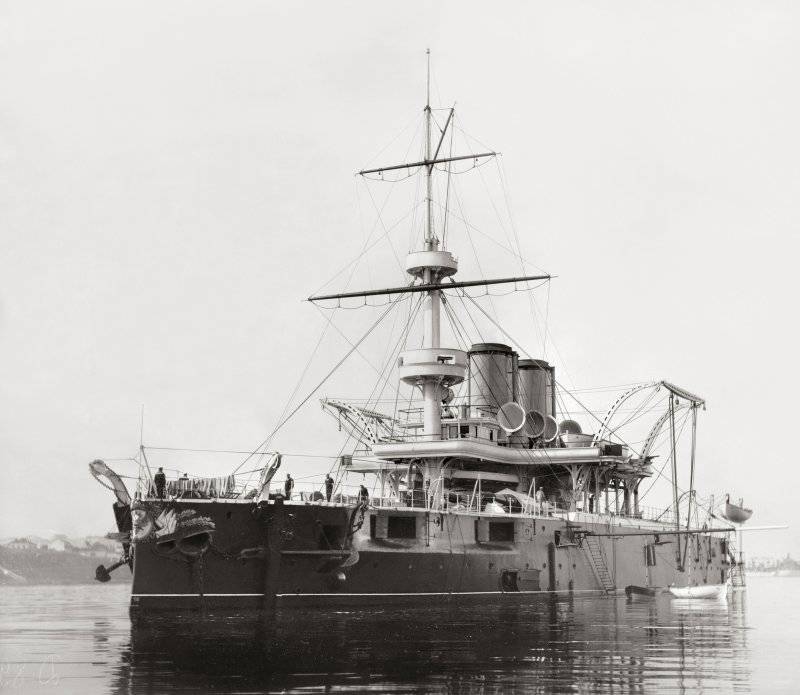
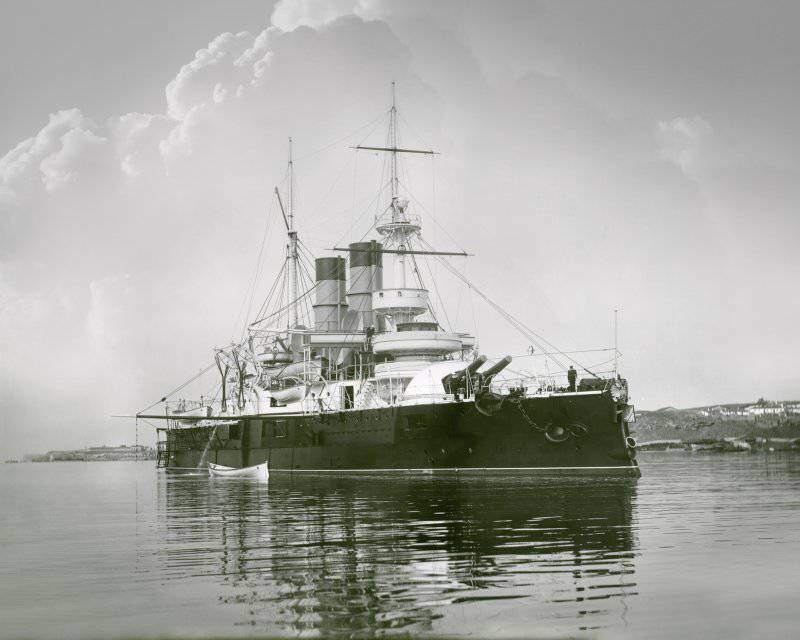
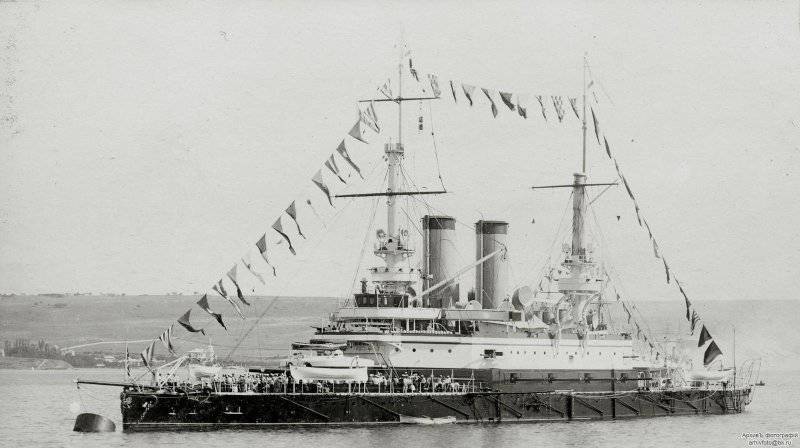
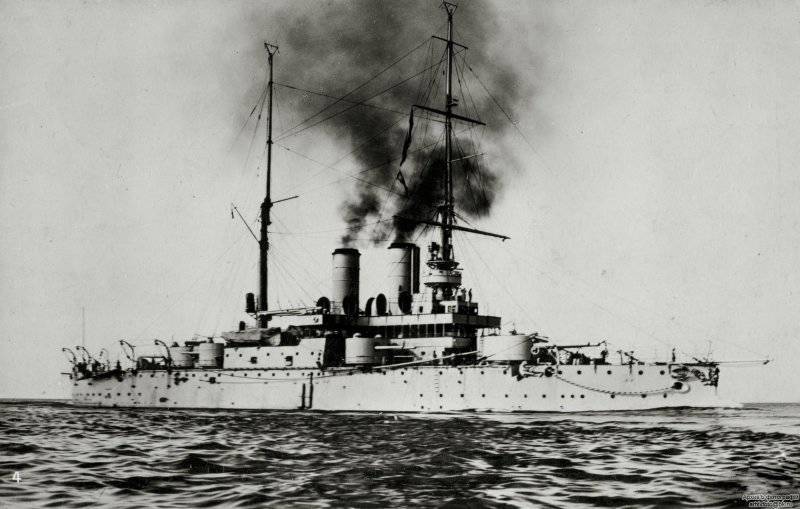
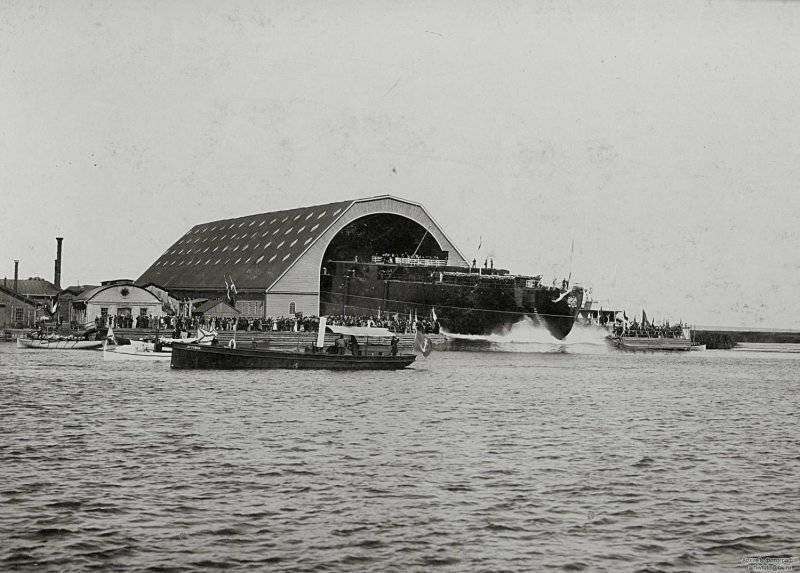
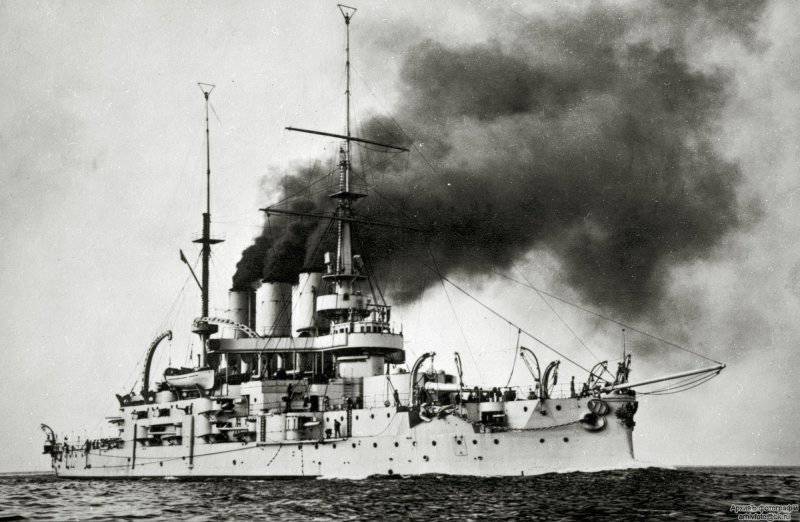
Information